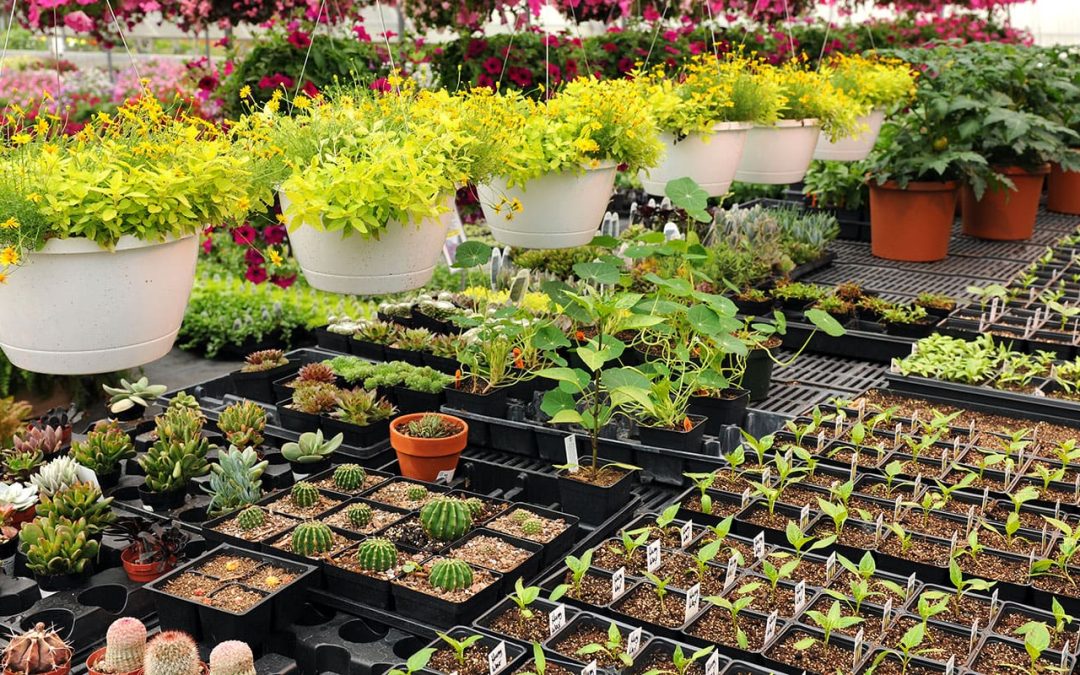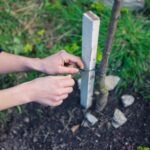Embarking on a greenhouse gardening journey can be an incredibly rewarding experience, offering numerous benefits and unique challenges. In this comprehensive guide to greenhouse gardening tips, we will explore various aspects of creating and maintaining a thriving garden within the controlled environment of a greenhouse.
From planning your greenhouse space with efficient layouts and storage solutions to extending your growing season by starting seeds early indoors, our expert advice will help you maximize productivity in your personal oasis. We’ll also delve into vertical gardening techniques that make the most of available space inside greenhouses while discussing how to choose plants best suited for greenhouse cultivation.
Finally, managing climate control is essential for ensuring optimal growth conditions; thus, we’ll cover ventilation systems and temperature monitoring methods. Additionally, effective pest management strategies are crucial in maintaining plant health – so we’ll share valuable insights on identifying pests and introducing beneficial insects as natural defenders against them. By implementing these greenhouse gardening tips throughout your horticultural endeavors, you’re sure to cultivate a flourishing indoor garden that provides year-round enjoyment.
Table of Contents:
- Planning Your Greenhouse Space
- Extending Your Growing Season
- Vertical Gardening Inside Greenhouses
- Choosing Plants Suited For Greenhouse Cultivation
- Managing Climate Control in a Greenhouse
- Managing Climate Control in a Greenhouse
- Conclusion
Planning Your Greenhouse Space
Creating an efficient layout to maximize the space and nurture plants is essential for making the most of your greenhouse. A well-designed layout can help maximize growing space and create a more efficient environment for nurturing plants. In this section, we will discuss various aspects of planning your greenhouse space, including designing a layout with plant tables and elevated platforms, incorporating storage solutions within the greenhouse area, and creating in-ground beds or raised beds inside the structure.
Designing a Layout with Plant Tables and Elevated Platforms
When planning your greenhouse, consider using plant tables or elevated platforms to provide ample room for seedlings and potted plants. This not only saves floor space but also allows better access to individual plants for watering, pruning, and monitoring growth. Additionally, elevated surfaces help improve air circulation around plants while reducing the risk of soil-borne diseases.
Incorporating Storage Solutions Within The Greenhouse Space
A well-organized greenhouse should include dedicated areas for storing pots, tools, soil amendments like compost or fertilizers, as well as other gardening supplies. Consider adding shelves along walls or under workbenches to store items neatly without taking up valuable floor space. Think about investing in containers that can be stacked and shifted around when needed.
Creating In-Ground Beds Or Raised Beds Inside The Greenhouse
- In-ground beds: If you have enough room inside your greenhouse structure, consider installing in-ground planting beds which allow you to grow warm-season crops such as tomatoes directly into the ground throughout the colder months.
- Raised beds: Alternatively, if you are limited on space or prefer a more controlled growing environment, consider building raised beds inside your greenhouse. These elevated planting areas offer improved drainage and soil control while also making it easier to maintain plants.
Extending Your Growing Season
One primary goal of using a greenhouse is to extend your growing season by starting seeds earlier in the spring and prolonging harvests into late autumn. You can achieve this by maintaining ideal temperatures inside your greenhouse through insulation methods like water buckets that collect warmth during daytime hours.
Starting Seeds Early Indoors Before Transitioning Them Outside
To make the most out of your greenhouse, start seeds indoors before transplanting them outside. This allows you to get a head start on the gardening season, ensuring that plants have ample time to mature and produce bountiful yields. For instance, starting tomato seeds indoors six weeks before the last frost date will give them enough time to grow strong roots and develop healthy foliage before being moved outdoors.
Using Water Buckets To Maintain Temperature At Night
Maintaining consistent temperature levels within your greenhouse is essential for plant growth and health. One effective method for achieving this involves placing water-filled buckets or barrels throughout the space during daylight hours. As these containers absorb heat from sunlight, they store it as thermal energy which then radiates back into the environment at night when temperatures drop. This passive heating technique helps maintain stable conditions inside the greenhouse while minimizing energy consumption.
- Action Step: Fill several large buckets or barrels with water and place them strategically around your greenhouse where they’ll receive direct sunlight exposure during daytime hours.
- Tips:
- Choose dark-colored containers to maximize heat absorption.
- Monitor temperature levels regularly and adjust the number of water-filled containers as needed to maintain optimal conditions for your plants.
Incorporating these strategies into your greenhouse gardening routine will help you extend the growing season, allowing you to enjoy fresh produce and beautiful blooms well beyond their typical outdoor timelines. By starting seeds early indoors and using passive heating techniques like water buckets, you’ll create a thriving environment that supports healthy greenhouse plants growth all year round.
Key Takeaway:
To extend your growing season in a greenhouse, use water buckets to maintain ideal temperatures and start seeds indoors before transplanting them outside. By incorporating these strategies, you can create a thriving environment that supports healthy plant growth all year round while minimizing energy consumption.
Vertical Gardening Inside Greenhouses
Maximize your available space within a greenhouse by incorporating vertical gardening techniques. This allows you to grow more plants without taking up valuable floor area while also improving air circulation around individual plants. By implementing creative solutions, such as hanging baskets or trellises for climbing plants and stacking shelves or multi-tiered planters, you can make the most of your greenhouse’s limited space.
Hanging Baskets or Trellises for Climbing Plants
Hanging baskets are an excellent option for growing trailing and vining plants in a greenhouse environment. They not only save floor space but also add visual interest to the overall design. Choose lightweight materials like plastic or wire mesh containers that allow proper drainage and airflow around plant roots.
Trellises provide support for climbing vegetables like beans, peas, cucumbers, and even some varieties of tomatoes. Installing trellis systems along the walls of your greenhouse will encourage upward growth while freeing up ground-level real estate for other crops.
Stacking Shelves or Multi-Tiered Planters
Incorporating stacking shelves into your greenhouse layout is another effective way to increase planting capacity without sacrificing precious square footage. These structures can be made from various materials such as wood, metal, or PVC pipes and configured in numerous ways depending on available space and specific needs.
Multi-tiered planters, like strawberry towers or vertical gardening systems, are another space-saving solution for greenhouse gardeners. Vertical gardening techniques enable the utilization of a limited area to cultivate multiple plants, as well as facilitating their tending and upkeep.
By implementing these greenhouse gardening tips, you can grow plants inside your unheated greenhouse and extend your gardening season. Plants thrive in a greenhouse environment, and starting seeds early in the year will give them a head start for the growing season. Additionally, consider installing watering systems to ensure your plants receive consistent moisture and nutrients.
By implementing these vertical gardening techniques inside your greenhouse, you can maximize the available growing space and enjoy a more diverse selection of greenhouse plants throughout the year.
Choosing Plants Suited For Greenhouse Cultivation
Not all plants thrive equally well inside greenhouses; some may require additional care due to humidity levels or limited light exposure. Select varieties suited specifically for these conditions, such as heat-loving vegetables like tomatoes, peppers, okra, and eggplants.
Heat-tolerant Vegetable Varieties
When selecting vegetable plants for your greenhouse garden, focus on those that are known to perform well in warmer environments. Some popular options include:
These vegetables not only tolerate the heat but also benefit from the controlled environment of a greenhouse where temperature fluctuations can be minimized.
Shade-tolerant Herbs Suitable for Lower-light Environments
In addition to heat-loving veggies, consider incorporating shade-tolerant herbs into your greenhouse garden. These plants can thrive even with limited sunlight exposure and make excellent companions for other crops. Some suitable choices include:
By incorporating a mix of heat-tolerant vegetables and shade-loving herbs, you can create a diverse greenhouse garden that maximizes the potential of your space while catering to the unique needs of each plant variety.
Managing Climate Control in a Greenhouse
Maintain optimal temperature ranges throughout different seasons while ensuring adequate ventilation systems are installed to prevent overheating or excessive humidity buildup. This will help create the ideal environment for your plants, leading to healthier growth and better yields.
Installing Ventilation Systems for Air Circulation
A well-designed ventilation system is essential in maintaining proper air circulation within your greenhouse. Different forms of ventilation systems are available, including passive vents, exhaust fans and roof openings. Passive vents allow fresh air to enter through openings near the base of the structure while warm air escapes from higher points such as ridge vents or gable-end windows. Exhaust fans can be used in conjunction with passive venting methods for increased airflow efficiency.
Monitoring and Adjusting Temperature Levels as Needed
- Maintain Ideal Temperatures: Different plants have varying temperature requirements; it’s important to know what each plant needs and adjust accordingly. For optimal results, most greenhouses should be kept between 65-75°F (18-24°C) during the day and around 55-60°F (13-16°C) at night.
- Incorporate Insulation: Adding insulation materials like bubble wrap or foam panels can help regulate internal temperatures by trapping heat inside during colder months and reflecting sunlight away during warmer periods (source).
- Use Thermostats and Heaters: Installing a thermostat can help you monitor temperature levels and make adjustments as needed. For colder climates, consider using greenhouse heaters to maintain consistent temperatures during winter months.
Taking the time to manage climate control in your greenhouse will ensure that your plants thrive and produce bountiful harvests. By installing proper ventilation systems and monitoring temperature levels, you’ll create an environment where both you and your plants can flourish.
Key Takeaway:
To effectively utilize a greenhouse, it is crucial to manage climate control by maintaining optimal temperature ranges and installing proper ventilation systems. This can be achieved through the use of passive vents, exhaust fans, roof vents, insulation materials like bubble wrap or foam panels and thermostats with heaters. By doing so, you’ll create an environment where both you and your plants can flourish leading to healthier growth and better yields.
Managing Climate Control in a Greenhouse
Maintaining optimal temperature ranges throughout different seasons and ensuring adequate ventilation systems are installed can prevent overheating or excessive humidity buildup. This section will discuss how to manage climate control in your greenhouse, including the installation of ventilation systems and monitoring temperature levels.
Installing Ventilation Systems for Air Circulation
A well-designed ventilation system plays a vital role in maintaining healthy growing conditions inside your greenhouse. Proper air circulation helps regulate temperatures, reduces humidity, and prevents the growth of mold and mildew on plants. Two types of ventilation systems can be installed, such as passive vents that rely on natural airflow and active fans providing forced air circulation. passive vents that rely on natural airflow (such as roof vents or side wall louvers) and active fans that provide forced air circulation.
Monitoring and Adjusting Temperature Levels as Needed
To ensure ideal growing conditions for your plants, it’s essential to monitor the temperature levels within your greenhouse regularly. Invest in a reliable thermometer or digital sensor to track fluctuations throughout the day accurately. Keep in mind that various plant species have specific temperature requirements; some may need cooler nighttime temperatures while others prefer consistent warmth around-the-clock.
- Cool-season crops: Maintain daytime temperatures between 60°F – 70°F (15°C – 21°C) and nighttime temperatures around 45°F – 55°F (7°C -13°C).
- Warm-season crops: Aim for daytime temperatures between 70°F – 80°F (21°C – 27°C) and nighttime temperatures of at least 60°F (15°C).
If you notice that your greenhouse is consistently too hot or cold, consider adjusting the ventilation system settings, adding insulation materials like bubble wrap or shade cloth, or using supplemental heating sources during colder months.
Conclusion
Greenhouse gardening can be a rewarding and fruitful experience with the right planning, plant selection, and maintenance. By designing an efficient layout, extending your growing season, incorporating vertical gardening techniques, choosing suitable plants for cultivation in greenhouses, managing climate control and pest management inside greenhouses; you can create a thriving greenhouse garden.
Incorporating these greenhouse gardening tips into your routine will not only help you grow healthy plants but also reduce stress on the environment by conserving water usage. With patience and dedication to maintaining optimal conditions for your plants’ growth, you’ll soon reap the benefits of fresh produce or beautiful flowers year-round.
If you’re looking to start or improve your greenhouse garden today with high-quality tropical plants from Troy’s Tropics! Our collection includes exotic houseplants that thrive indoors as well as outdoor varieties that are perfect for adding color to any landscape. Visit Troystropics.com now!






